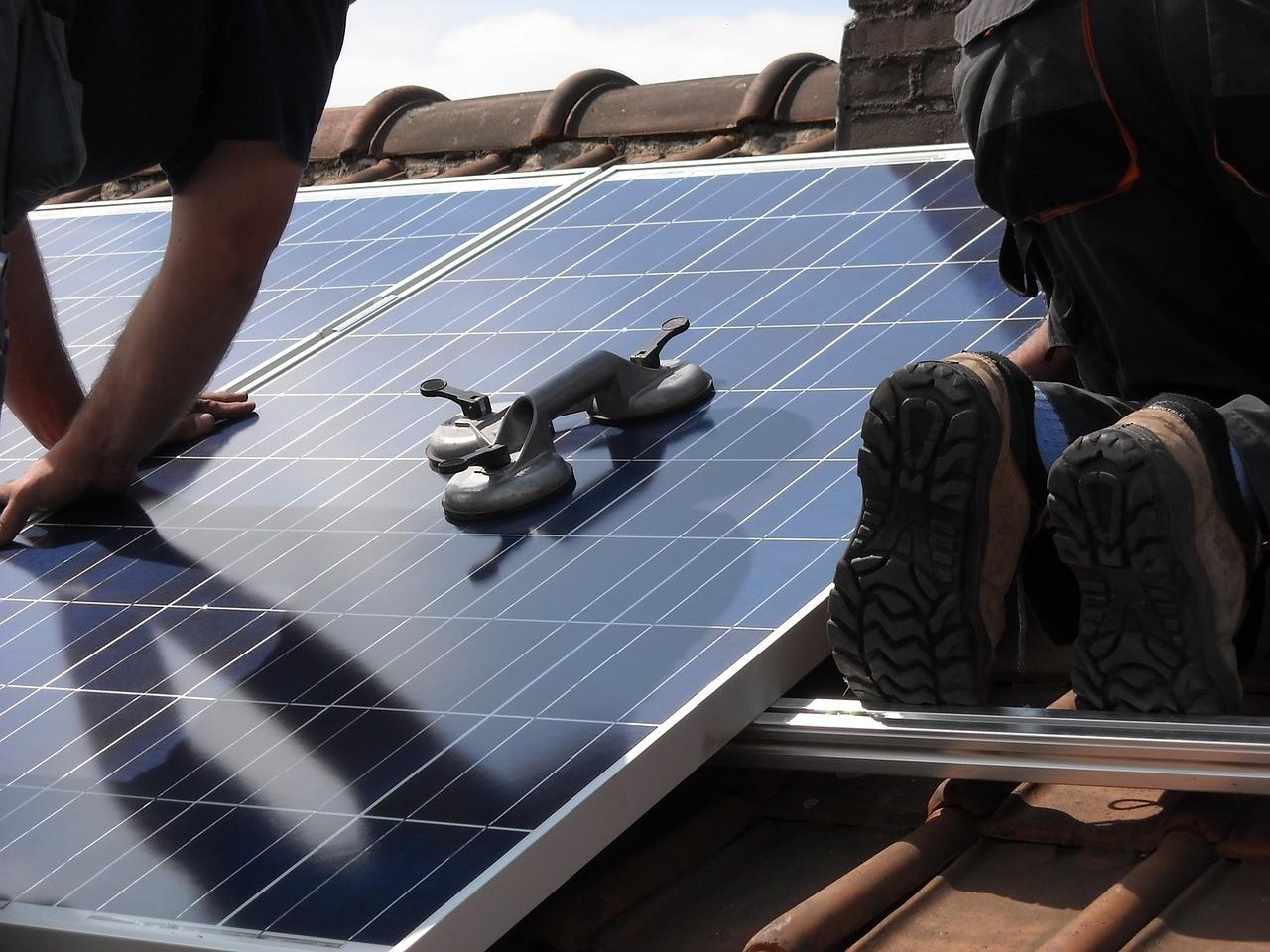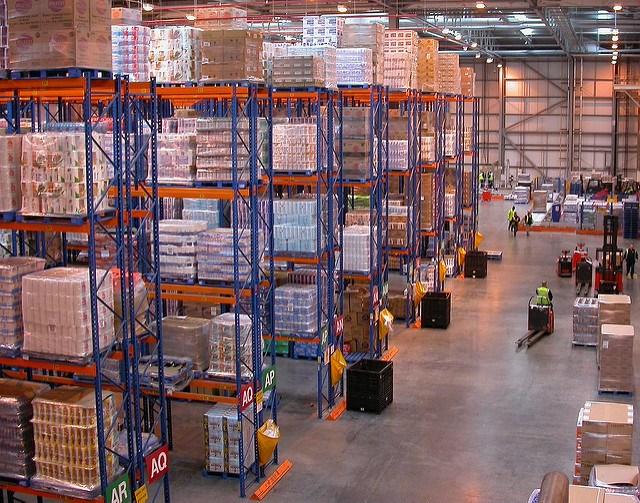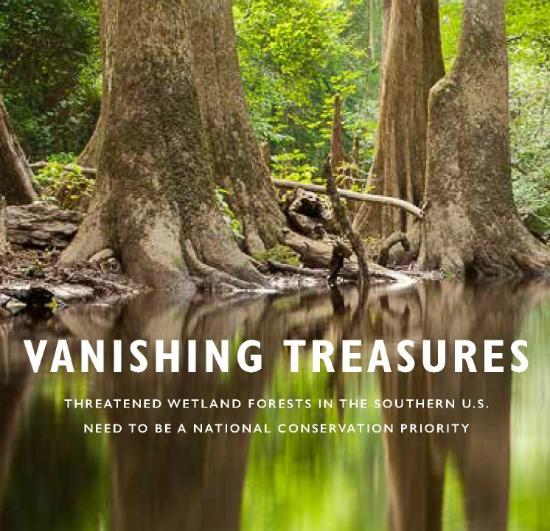How Technology Innovation Will Save Customer-Owned Solar


Nevada became just the latest state where a public utility commission crushed the economics out of customer-owned solar. Their rational for doing so mirrors the utility industry’s mantra that solar customers are avoiding their fair share of a utility’s cost to serve.
The solution being proposed by utilities, and accepted by their commissions, is to slash what a utility pays for customer-owned solar power. The result in Nevada is the mass exit of solar companies, significant job loss and an outcry from utility customers who bought or leased a solar power system.
Technology innovation versus utility regulation
When commissions endorse the utility industry’s fairness argument, they are failing to recognize a bigger technology picture. Utilities have no technology path for cutting customer bills by 20 percent or more. Utilities are not filing integrated resource plans that eliminate air pollution.
Conversely, customer-owned solar and zero net-energy home designs do have a technology path for delivering dramatically lower electricity bills plus zero emissions. A commission is turning a blind eye toward the technology future when it crushes customer-owned solar’s economics by accepting the utility’s position on fairness. It is a decision that preserves utility revenues at the expense of an alternative, customer-owned technology path that lowers electricity bills and reduces pollution.
The question of fairness is a non-issue
Utility rate-design history is rife with examples of utility-proposed, and commission-approved, examples of unfairness. Utilities and their commissions have consistently offered lower rates to industrial customers to remove the economic attractiveness of self-generation. The “lost utility revenue” is most often recovered by charging commercial customers higher rates. Commercial customers are chosen for higher rates because they do not vote like residential customers and did not have, until the advent of customer-owned solar, a self-generation option like large industrials.
To single out customer-owned solar on the issue of fairness is in itself unfair because fairness is really not the issue. The real issue for utilities is revenue preservation. The real customer issue is their ongoing quest to get a lower electricity bill. The state issue is how to enable the adoption of technologies that generate jobs and improve public health by reducing pollution. The real issue is that the commercial interests of utilities are not aligned with the commercial interests of consumers, state economic development goals or the common welfare gained from reducing pollution.
The false argument that utilities can do it cheaper
The utilities also make the argument that they can deliver renewable energy cheaper than customer-owned systems. The numbers at the solar or wind power plant busbar support their case. Solar and wind power do benefit from economies of scale.
But this is another false issue. The customer issue is not about what solar or wind power costs at the plant busbar. The customer question is: What is the size of my electricity bill? A related customer question is: Why should I pay for fossil-fueled power plants that may no longer be price-competitive and have air emissions that contribute to global warming? The commercial appeal of customer-owned solar power is that it can dramatically lower electricity bills with zero onsite air emissions. The utility industry has yet to offer a competing product.
Technology innovation will move past present day regulatory capture barriers
Regulatory capture is an economics term describing how a regulated business can overly influence the decisions of the government agency charged with its regulation. The solar industry has learned a hard lesson about regulatory capture as it petitioned regulators, mostly unsuccessfully, to preserve the economics of net-metering. The commission is the utility’s home field where they have built decades of legal precedents that support their business model.While regulatory capture is a painful reality for the solar industry, and customers who have invested in solar, this is not the end of the story. Technology innovation is still one of the most powerful forces in the American economy.
Technologies that lower electricity bills and reduce pollution are on a global commercialization path. Solar continues to gain economies of scale in China, California and Europe. Led by Tesla and LG Chemical, battery technology is now on the same cost-decline path as solar. Led by Apple, Google and Amazon, smart-building technologies are gaining increased artificial intelligence, improved customer interface and lower costs.
Regulatory capture has a shelf life. It has been about 50 years since the utility industry stopped delivering the continuous price reductions that underpinned the rationale for creating regulated utility monopolies. Regulatory capture will end when technologies can cost-effectively enable customers to delink their service from utility service.
At such time utilities will once again be focused on winning customers by offering lower electricity bills plus sustainably-sourced electricity. This is the future that today’s utility regulators should be focused on and enabling.
Image credit: Pixabay
Animal Welfare Reporting Increasingly Linked to the Bottom Line


How can you know the hamburger you eat for lunch is sourced from a food supplier that humanely processes its beef? As an investor, what key indicators are assuring you that a company has quality management in place? Is your business adequately meeting the demands of consumers that increasingly scrutinize your product sourcing? Farm animal welfare reporting helps answer these questions for consumers, investors and business owners.
The Business Benchmark on Farm Animal Welfare 2015 Report brings the topic of how animals are treated to the ongoing industry discussion of corporate responsibility. It gives some companies good marks for attention to this often neglected topic, while pointing out that much progress remains to be made.
Expert Advisor to the Business Benchmark on Farm Animal Welfare (BBFAW), Rory Sullivan, says the 2015 report indicates this about the state of animal welfare: “It tells us two things. The first is that farm animal welfare is receiving nothing like the same level of attention as other corporate responsibility issues in the food industry. The second is that this is starting to change. There is now a group of clear leaders, and some 60 percent of the 90 companies covered by the benchmark have established policies and provide evidence that these policies are being implemented.” In 2012, this same report showed that less than half of the companies it surveyed had a published animal welfare policy.
The Benchmark report focuses on four core areas of self-reporting by global food companies:
- Management commitment and policy
- Governance management
- Leadership and innovation
- Performance reporting
Larger, established companies generally score prominently in the report, as do those diligently working to maintain public confidence. BBFAW Executive Director Nicky Amos highlights: “The higher scoring companies in the benchmark tend to be the experienced reporters on corporate responsibility issues, either because they are publicly listed and/or because they have a strong ethical stance and well-developed communications and marketing on sustainability issues (for example, Marks & Spencer, Unilever, J Sainsbury, the Cooperative Food U.K. and Waitrose).
"There are also a number of companies (such as Tesco, McDonald’s, Tyson Foods and Nestle) that have historically found themselves under public scrutiny following media or NGO campaigns involving their supply chain practices. These companies have invested significant effort in engaging stakeholders and improving the transparency of their reporting as a means of restoring trust and rebuilding brand value.”
Restaurants and bars scored lower as a group, compared to the food industry in general. The more notable and publicly-traded restaurant companies tend to be more likely to weigh in on this topic, while privately-owned restaurants show the least interest in this sort of disclosure. Study authors assert that customer and client demand will increasingly drive accountability for agricultural and food-processing practices.
While what happens on the farm or food-processing facility isn't always an indicator of what ends up on your plate, Sullivan says there is a connection. “There is strong evidence that higher standards of animal welfare correlate with better-quality food products. Assurance schemes that demand high standards of animal welfare, an example is the Freedom Foods scheme (now called RSPCA Assured), are the easiest way to communicate that products are underpinned by higher welfare standards." Sullivan goes on to concede that much third-party verification doesn't extend far beyond basic quality and food-safety standards.
Investors are increasingly watching animal welfare standards, Sullivan says, because they're both watchful about companies' risks and exposures to farm animal welfare, or because this is what he calls "a proxy for companies' wider quality of management." To an investor, a grade from the benchmark could hold sway when determining company value.
One of the strongest business arguments for a company to become more transparent about attention to animal welfare is that this can reduce business risk. Also, it allows business to be responsive to consumer demands about the origin of food products. "Reflecting the core message from the previous benchmarks, the key conclusion for investors is that farm animal welfare continues to be a systemic risk that many companies in the food industry are either not effectively managing or not properly reporting," the report authors write.
When you dig in, this report can also show you details about individual companies and related subtopics. Amos shares: “Alongside the report, the BBFAW provides supplementary resources for investors wanting to understand more about farm animal welfare.
"For example, our investor briefings on animal welfare topics cover relevant legislation, key welfare issues (such as the prophylactic use of antibiotics in intensive farming systems), and wider themes (on, for example, consumer attitudes to and perceptions of farm animal welfare, and the business and investment cases for managing the issue). Investors can also register to download two-page summary reports on individual companies assessed in the benchmark. These resources, along with the 2015 Benchmark Report, are available at www.bbfaw.com."
Image courtesy BBFAW
Suppliers Need To Step Up Managing Climate Risks


Supply chains represent a significant source of greenhouse gas (GHG) emissions reductions and climate-related risks to companies. So, how are suppliers assessing and managing climate risks? It’s a mixed bag, as a recent report from CDP analyzing information from more than 4,000 suppliers of 75 of its supply-chain members. The participants represent over $2 trillion in procurement spending.
First, the good news. Some findings represent improvements. Suppliers that participated from 2013 to 2015 showed “noticeable increases” in both their level of action and risk perception. Perception of climate change risks increased from 78 percent in 2013 to 84 percent in 2015. Perception of regulatory risks also increased from 71 percent in 2013 to 77 percent in 2015. Suppliers with an emissions-reduction target increased from 50 to 56 percent. Suppliers reporting gross global emissions also increased from 68 to 85 percent.
The majority of participants (72 percent) identified regulatory physical and/or a wide range of other climate-related risks. But the findings also show that suppliers “are slow to act,” as the report put it. Half of the suppliers CDP invited to report their climate and water data didn’t do so. Only about half of those that did participate implemented "any given measure of climate risk management.” Those measures range from integrating climate change issues into business strategy (63 percent) to engaging with suppliers (25 percent). Only a third of participants reported decreasing Scope 1 and Scope 2 emissions for the reporting year.
Despite some of the negative findings, the report acknowledges that the “supplier data also offer[s] hope.” Suppliers that report on their climate change performance take more action to manage risks and are more likely to reduce their emissions from the previous year.
However, the opposite is also true. Suppliers that didn’t respond to CDP are less likely to have such procedures in place. Using first-time participant’s data as a proxy for the 49 percent of suppliers that didn’t respond to CDP’s questionnaire, “it is possible to deduce that this much larger group of non-reporting suppliers also performs poorly,” the report states.
That conclusion suggests that CDP's data may be giving “too positive a picture of supplier performance.” So, increasing response rates is key to gaining a better understanding of climate change risks and management of them.
Suppliers just aren't doing enough
Here’s some more good news with a bit of bad thrown in. A large majority of participants acknowledge climate change risks, and 72 percent identified climate change risks that may significantly affect their companies. Most suppliers (64 percent) cited regulatory risks, and over a third cited regulatory risks that are both likely to occur and are significant, with the top three being fuel/energy taxes and regulations, carbon taxes, and obligations to report on emissions. However, the number of participants identifying regulation risks actually decreased from 66 percent in 2013.And here’s more bad news. Some of the biggest climate change risks are physical, but fewer suppliers (46 percent) cited the physical risks of climate change to their business. Forty percent did identify other climate risks such as changing consumer behaviors and company reputational risks.
Supplier data shows that climate change risks are underestimated: Although 60 percent of the participants have climate risk assessment and management procedures in place, 35 percent do not.
Water risks are some of the biggest climate change risks, and water or lack of it is on the minds of many Californians due to their state’s four-year drought. Plenty of other regions in the world are also water-stressed. However, water risks are “particularly under-evaluated and under-reported.” For example, only 826 (42 percent) of the 1,969 suppliers that CDP invited to participate in its supply chain water program actually participated. And of those that participated, only 41 percent assessed their water risks, 45 percent integrated water into their business strategies, and 36 percent adopted a water policy with clear goals and guidelines for taking action.
Reporting and managing climate risks saves money. Suppliers who participated for three years in CDP’s questionnaire saved a total of $6.6 billion a year through GHG-reduction projects and an average of $1.3 million per supplier in emissions-reduction initiatives. They also reported an average savings of $900,000 per initiative.
Given the size of the suppliers represented by the participants, there is a significant opportunity for GHG reduction. If they stepped up their game and significantly improved in the next few years, the world would be closer to realizing the goal of the Paris climate agreement: keeping temperature increases to 1.5 degrees Celsius. And if the suppliers who declined CDP's requests started participating, we would be even closer still.
Image credit: Flickr/Nick Saltmarsh
Super Bowl 50 Aims To Be the Greenest Ever


This weekend, the pinnacle event on the NFL calendar, the Super Bowl, will kick off to determine whether the Carolina Panthers or the Denver Broncos will succeed in lifting the coveted Lombardi trophy in the 50th anniversary event. The Super Bowl has become synonymous with not only the action on the field, but also the star-studded halftime shows and glitzy commercials.
Less on people’s minds, I would venture to guess, is sustainability. Yet the Super Bowl 50 Host Committee says this year’s game will be the greenest one yet. The committee aims to achieve a “green legacy” by putting together what it describes as a “net-positive” event. Here’s a quick look at some of the initiatives.
Leaving a green legacy
In partnership with Verizon, the Host Committee partnered on several community projects in January, such as the planting of several dozen trees around the Bay Area in various urban forests, located in parks, playgrounds and other public places.
Additionally, two large-scale reforestation projects are underway, including the restoration of portions of the Sierra Nevada watershed entailing the planting of thousands of trees covering an area equivalent to the entire Levi’s Stadium campus. The plan was developed by Verizon and American Forests, and it was subsequently expanded to achieve the planting of 28,000 trees in conjunction with the NFL.
In keeping with the sporting theme, a Super Kids sports equipment and book donation event took place in January at Santa Clara University that distributed thousands of items to low-income schools and youth programs throughout the region.
Carbon offsets
With a large-scale event such as the Super Bowl, the greatest environmental impact is with regard to carbon emissions incurred in the transportation of thousands of people attending the game. To mitigate the negative impact, the Super Bowl 50 Host Committee partnered with TerraPass to give fans and sponsors the opportunity to offset their carbon footprint related to Super Bowl activities. Visitors to Super Bowl 50 are invited to pledge carbon offsets and water restoration certificates online.
A $2 TerraPass pledge offsets 200 pounds of carbon dioxide equivalent emissions, restores 50 gallons of water, and includes a donation to the nonprofit San Francisco Carbon Fund. Additionally, both NFL teams’ travel to and from the game will be made carbon-neutral through offsets. Further information on TerraPass’s involvement with the event can be found here.
Renewable energy use at Super Bowl City
Augmenting the fans' experience in the Bay Area, San Francisco is hosting the Super Bowl 50 fan village -- designed to celebrate the event and showcase, as the Host Committee says, “the best the Bay Area has to offer, with interactive games and activities that highlight the region’s technological prowess, culinary excellence and cultural diversity.” Organizers expect 1 million visitors to pass through Super Bowl City over the course of a nine-day period. Visiting fans will get to experience things such as a 50-by-15-foot video wall and two stages where the likes of Alicia Keys and Chris Isaak -- among others -- will appear.
To power this pop-up city, organizers have partnered with Neste Corp. to supply renewable diesel to fuel state-of-the art EPA 'Tier-4' generators that will supply all of the power in what organizers describe as the most environmentally-friendly Super Bowl City ever. The renewable diesel is made from waste and residues and is claimed to cut the carbon footprint by 50 percent compared with using petroleum-based diesel fuel. In addition, the Tier-4 generators themselves radically reduce both particulate and nitrogen oxide emissions -- an improvement in excess of 90 percent by each measure, compared with lower-end Tier-2 types.
Additionally, a fleet of 100 charter buses comprising the event’s 'Fan Express' service, to get fans from around the Bay Area to Sunday’s game, will also be powered by Neste’s diesel, which is claimed “to remove the equivalent of some 2,000 cars from the road.”
Charitable giving
Super Bowl 50 has amassed around 5,000 volunteers for the event, and some of these will walk among the visitors at Super Bowl City and engage with them to ask if they used mass transit to get there. If they answer “yes,” they will be entered into a sweepstakes prize draw, giving them a chance to win two tickets to the game. Along with the chance to win, they will also get 50 “gold coins” to distribute between four Bay Area green charities: Education Outside, Environmental Volunteers, Children’s Discovery Museum of San Jose and Hunters Point Family Healthy Bayview.
The gold coins themselves are backed by real dollars such that $200,000 dollars will be donated across the four charities by the Host Committee’s charitable arm, 50 Fund. TriplePundit covered extensive details of the 50 Fund in this piece from last week.
The multifaceted sustainability efforts set the course for this year's Super Bowl in a positive direction. Events of the magnitude of the Super Bowl cannot happen with some impact and criticism, though. The San Francisco Chronicle reported last week that local food vendors and artists who operate typically in, or around, the footprint of the Super Bowl City have complained of being crowded out and are not permitted to set up shop in their usual locations during the event. Some feel that, rather than the event helping local businesses, they will suffer a loss of income by having to operate elsewhere. Perhaps that won't be known for sure until after the event; maybe an extra million people in town over the period will help offset any hardship.
Locals too might find themselves subject to additional scrutiny on ferries and subjected to bag checks when traversing the location of Super Bowl City; that’s to be expected in today’s world.
However, a high-profile event such as this is bound to cause disruption somewhere, so the Host Committee’s attention to making the Super Bowl the most sustainable ever is nonetheless a commendable and important undertaking.
Image used courtesy of GreenSportsBlog
World Wetlands Day and the Growing Need for Global Cooperation


By Dayna Reggero
Marked this month, World Wetlands Day is a celebration of cooperation on a global scale. Danna Smith, the director of Dogwood Alliance, brought it to my attention that World Wetlands Day set the stage for the largest intergovernmental agreement on the environment to date -- the Paris Agreement, signed this past December by 195 countries committing to take action on global climate change.
Sixty-five percent of our nation’s wetland forests are found in the Southern U.S., and a vast majority are found on private lands across the rural landscape. Recently, biomass energy emerged as a new threat to wetland forests with European policymakers promoting the burning of these Southern forests for electricity to meet their “clean energy” targets.
As Smith put it: “Accelerated logging in recent years to supply a new market to Europe for wood as a fuel for generating electricity underscores the constant threat and ongoing degradation these largely unprotected forests face,” Smith said. “While some laws prevent these forests from being converted to agriculture or development, rampant industrial logging remains largely unregulated.”
The Daily Mail recently ran an expose that stated: “Hunger for wood fuel is devastating hardwood forests in America,” and, “although they are home to dozens of species of animals and birds, some of them endangered, the forests are not protected.”
A recent report prepared for Dogwood Alliance by Key-Log Economics shows that the long-term consequences of biomass far outweigh any suggested benefits. Standing forests provide critical ecosystem services, supplying coastal communities with natural storm protection and abundant and clean drinking water; plus, using wood pellets as fuel for generating electricity is likely to accelerate climate change with enormous economic costs that would disproportionately impact our coastal communities; and the increased degradation of forests and the natural services they provide could significantly limit a community’s ability to attract new businesses and residents, one of the most important factors affecting economic growth across the South.
“The wood-pellet export market is not a sound economic development strategy for the rural South in the 21st century,” Smith said. “In light of recent increased periods of drought, impending threats of sea level rise and the increasing frequency and intensity of storms, keeping wetland forests standing strong along our coasts is one of the smartest investments we can make over the coming decades to keep our coastal communities safe from the impacts of a changing climate.”
The conservation, restoration and responsible management of Southern wetland forests are critical in the global effort to address climate change because of the important role they play in removing and storing carbon. This is one in a myriad of reasons why wetland forests across the region are the target of a new initiative that will work across a nine-state region to protect the best of what remains across the South.
This past year, while filming climate change stories around the South as part of my Climate Listening Project tour, I saw first-hand the desolate landscapes and clear-cuts amidst our Southern forests. Just like the Paris climate agreement, continued global cooperation is essential to ensure the long-term protection of our wetland forests and communities -- with individuals, organizations, utility companies, government and policymakers, landowners, and the private sector all working together to create clean and socially-responsible energy solutions.
Image: Dogwood Alliance
Plant-based package proves commercial success


Tetra Pak will deliver more than 100m packs of its Tetra Rex® Bio-based pack this year, reflecting strong demand for the package since its launch in January 2015.
The world’s first package made entirely from plant based materials has gained popularity among consumers across Finland, Sweden and Norway, with brands such as Valio, Arla Foods, Vermlands Mejeri, and TINE, says the packaging giant.
Bjørn Malm, head of corporate responsibility at TINE, Tetra Pak’s latest customer to use the package commented: “We believe growing our business sustainably is not just good for the environment, it also improves our competitiveness and provides product differentiation. Thanks to Tetra Rex Bio-based we have been able to take a significant step towards our own environmental goals and have committed to making all our milk cartons renewable from next year”.
Charles Brand, executive vp Product Management & Commercial Operations at Tetra Pak said that the success of the package was "a significant milestone" in the company's ambition to provide 100% renewable packaging across its product portfolio.
New recycling scheme for 'orphan vehicles'


The British automotive industry has committed to helping thousands of consumers recycle their old vehicles with a free take-back service, designed to help owners whose brand may no longer sell in the UK.
Under the End of Life Vehicles Directive, when cars and vans up to 3.5-tonnes reach the end of their lives, they must be disposed of in an environmentally responsible way. However, while manufacturers provide this service free of charge, some motorists can face difficulties if the brand is no longer trading and has no parent company. When this happens, the car or van becomes what is known as an ‘orphan vehicle’ and there are currently around 700,000 of them in the UK.
The Society of Motor Manufacturers and Traders (SMMT) has now taken on responsibility for these vehicles by partnering with recycling company Autogreen to ensure that all unclaimed cars and vans can be disposed of and recycled responsibly – with no cost to the consumer.
The scheme should prove especially valuable to owners of orphan vehicles in remote areas of the country who can find it difficult to get to a recycling point. Autogreen has committed to collect vehicles nationally, to make sure that all vehicles can be easily disposed of in a safe, environmentally friendly way for free.
According to SMMT, cars are already one of the most efficiently recycled consumer products, with manufacturers now tasked with recycling and recovering at least 95% of old vehicles.
Mike Hawes, SMMT chief executive, commented: “This new partnership is further evidence of just how seriously UK vehicle manufacturers take their environmental responsibilities. The industry has a strong record, not just on recycling, but on emissions, energy and water usage reduction as a result of huge investments into innovative technologies, production processes and facilities.
"Thanks to this latest initiative, every motorist in Britain can now be assured that when their vehicle reaches the end of its life it will be disposed of in a way that is not just ecologically sound, but cost-free – no matter where they live.”
Cliven Bundy Taunts Feds Over Malheur Takeover


Just when you thought things were settling down over at the Malheur National Wildlife Refuge, there they go again. Cliven Bundy, father of Malheur takeover leader Ammon Bundy, has just waded into the fray with a newly-issued certified letter notifying Harney County Sheriff David M. Ward, Oregon Gov. Kate Brown, and U.S. President Barack Obama that "we the people of Harney County" and "we the citizens of the United States" intend to "retain possession" of the federal preserve.
The younger Bundy and his band of armed hooligans occupied the federal preserve early in January and renamed it the 'Harney County Resource Center,' but as of this writing he and his main allies have been arrested and jailed without bond, and all but four of his fellow occupiers have fled. The four remaining in the refuge are running out of fuel, their Internet and phone service has been cut off, and Ammon Bundy himself is pleading with them to go home. It's only a matter of time before they give up, so ... What's with Dad and this "possession" thing?
The long fingers of ALEC
TriplePundit first took note of the Malheur takeover when it began unspooling early in January, and the first thing we noted was that the episode looked really odd from a corporate social responsibility point of view.
The fundamental principle behind CSR is stakeholder engagement, including consensus and collaboration with your workers, your consumers, your supply chain and your community -- and these are also guiding principles behind successful social engagement.
From the outset, the Malheur incident was curiously absent of any significant stakeholder engagement in the local community. That prompted us to look for some broader political perspective in our first post on the topic, and we found some commonalities with the "states-rights" agenda of ALEC, the powerful Koch-backed lobbying group.
Our Feb. 1 post on the Malheur takeover took a deeper dive into the ALEC connection. Based on local reporting and public record, we reached the conclusion that Ammon Bundy targeted Malheur for an extreme action not because federal policies in the region were demonstrably misguided, but for the exact opposite reason.
Back in 2013, local stakeholders -- including the Oregon Cattlemen's Association -- reached an agreement with the federal Bureau of Land Management that established a collaborative system for land use in and around the Malheur refuge. According to local accounts the 2013 agreement was working, and it was being held up as a model for other regions.
That kind of stakeholder engagement is a direct threat to the ALEC states-rights agenda, which calls for turning over federally-owned public lands to the states, as a first step to private ownership and more intensive development.
Long live the 10th Amendment
That brings us to the latest action from the Bundy family. Cliven, the elder Bundy, is a Nevada rancher who gained notoriety in 2014 for calling upon a gang of armed men to help him stave off federal agents who came to hold him accountable for a decades-long theft of property involving his refusal to pay grazing fees on public lands.
Citing the 10th Amendment of the U.S. Constitution, Cliven Bundy argued that the federal government had no right to collect grazing fees. His position was supported publicly by high-profile Republican leadership -- including current presidential contenders who also receive significant campaign contributions from the Koch brothers, who are primary backers of ALEC.
Despite the evident failure of son Ammon to continue the Malheur occupation, Cliven Bundy issued the aforementioned certified letter, dated Feb. 1 and notarized by a Nevada notary public, which can be found in full on the Bundy family ranch blog. Following the postal addresses for Sheriff Ward, Gov. Brown, and President Obama is this message:
Mailed Certified & Emailed to the above Internet to the World
Dear Sheriff Ward,
This is notice that We the People of Harney County and also We the People of the citizens of the United States DO GIVE NOTICE THAT WE WILL RETAIN POSSESSION OF THE HARNEY COUNTY RESOURCE CENTER. (Malhaur [sic] National Wildlife Refuge)
Remove all federal and state policing agents out of Harney County.
Place a Harney County sheriff guard post at the entrace road of the Harney County Resource Center stopping all from entering or exiting, for a time.
If you're waiting for some kind of explanation for the authority behind the letter, check the Bundy ranch blog post dated Jan. 31, the day before the letter was posted. It's long but do read it to get the full picture, as Bundy's argument deploys a liberal dose of poetic license. For those of you on the go here are the key snippets:
"... In the 10th Amendment only a very few enumerated powers are given by the people to the federal government. All other powers and rights are reserved to the states respectively or to the people.) (The Bill of Rights Article X)[snip]
"... Only in Article 4, Section 3 of our constitution do We the People give congress unlimited power over land and congress had power to dispose of these lands. That’s exactly what they did when they admitted states to the union. The only other power that the constitution affords the government is Article 1 Section 8 Clause 17, here We the People give congress unlimited power to legislate over 10 miles square, which is Washington, D.C., and other property purchased with the consent of state legislature for military purposes and other needful buildings."
And here are some snippets from the model legislation promoted by ALEC on its website:
"WHEREAS, the Tenth Amendment limits the scope of federal power and prescribes that the federal government was created by the states specifically to be an agent of the states, rather than the states being agents of the federal government; and[snip]
"NOW THEREFORE, BE IT RESOLVED that [Insert State] hereby claims sovereignty under the Tenth Amendment to the Constitution of the United States over all powers not otherwise enumerated and granted to the federal government by the Constitution of the United States; and
[snip]
"BE IT FURTHER RESOLVED that we state our intentions to ensure that all government agencies and their agents and employees operating within the geographic boundaries of [Insert State], or whose actions have an effect on the inhabitants, lands, or water of [Insert State], shall operate within the confines of the original intent of the Constitution of the United States ... "
In sum, the Malheur takeover is looking less like the bumbling misadventures of an arrogant out-of-towner, and more like a calculated effort to disrupt a national model for collaboration, cooperation and mutual benefit between federal agencies and local stakeholders.
Image: Greater Sandhill Crane at Malheur National Wildlife Refuge by Roger Baker via U.S. Fish & Wildlife Service.
The Low-Down On Sustainable Cotton


Cotton as a fiber is plant-based and as such is more sustainable than synthetic fibers. It is renewable and supports about 250 million people globally. Worn around the world, over 25 million tons of cotton are produced every year in around 85 countries.
Cotton is approximately 55 percent of the fiber used in clothing and textile production. Over 60 percent of the world’s cotton is grown and produced in developing countries and provides a livelihood for over 100 million farmers. But intensive farming methods are used, such as overusing water and pesticides, and those methods threaten the ecosystems cotton depends on. Cotton farmers are also subject to price fluctuations and increasing input costs. Conventional cotton growing is just not sustainable.
“The indiscriminate use of pesticides is bad for the soil and has human health impacts. It’s generally bad for the community,” Anita Chester, head of sustainable raw materials for the C&A Foundation, told TriplePundit.By contrast, sustainable cotton is “cotton that’s grown carefully” with environmental and economic aspects considered, Chester said. One standard within sustainable cotton is organic, which does not need pesticides or insecticides and uses less water and energy. It’s environmentally friendly and provides financial security for smallholder cotton farmers. Chester explained that with organic cotton production, “natural methods are used to control pests with no GMO seeds used.”
The problem is that organic cotton only accounts for 1 percent of total cotton production. Organic cotton production has actually declined over the last five years. “Farmers don’t see the advantage in staying organic,” Chester said. “They don’t see a business case.” There are other problems, she added. “Retailers face issues of lack of transparency in their supply chains. There’s a huge fear of GMO contamination.”
Consider that India, a developing country, is the biggest organic cotton producer, accounting for 75 percent of all organic cotton globally. Most Indian cotton farmers are smallholders farming less than two hectares of land. Organic cotton production is certainly not easy for smallholder farmers. However, there is another standard, Better Cotton, which “substantially scaled up in the last five years” and is “an easier standard for farmers to follow,” Chester explained.
With Better Cotton, pesticides and insecticides are used, but the principle is “continued improvement.” In 2014, 7.6 percent of all cotton produced globally was Better Cotton, according to the Better Cotton Initiative’s 2014 sustainability report. The initiative wants that amount to hit 30 percent by 2020 because it believes that “will be a tipping point and lead to transformational change for the entire sector.”
Top international brands like H&M and Nike use Better Cotton in their supply chains and their support increases its penetration in the market. H&M is one of the biggest users of organic cotton in the world. The retailer's goal is for all of the cotton it uses in its products to come from more sustainable sources by 2020. It defines more sustainable sources as being “either organic, better or recycled.”
C&A Foundation has a number of initiatives to help overcome the obstacles to sustainable cotton growth. One of those is the Organic Cotton Accelerator, created in 2013 by Textile Exchange, C&A Foundation, CottonConnect and small group of brands to accelerate organic cotton production. A global initiative, it addresses obstacles to organic cotton production and helps link producers to the market.
Connecting retailers with sustainable cotton production is key. In 2009, C&A Foundation, Textile Exchange (formerly Organic Exchange) and the Shell Foundation founded CottonConnect. Since its launch, CottonConnect has helped retailers buy more sustainable cotton grown by smallholder Asian farmers. It has supported over 40,000 farmers in India, China and Pakistan to reduce both their input and water use.
Working with CottonConnect, C&A Foundation organized an event that brought over 170 stakeholders in the Indian organic and sustainable cotton sector together in March 2014. As a result, the Organic and Fair Cotton Secretariat in India was created, and the foundation supports it financially. The group is made up of Indian private-sector champions, NGOs and other stakeholders. Its goal is to raise awareness and be advocates for more supportive policy framework for organic cotton.
The many benefits of sustainable cotton
Sustainable cotton is badly needed. “No commodity is as polluting as cotton,” declares the Sustainable Trade Initiative. About 10 percent of all agricultural chemicals used globally are used by the cotton sector. It's only grown on about 2.5 percent of the world’s agricultural land. The pesticides end up in groundwater and rivers. They not only get rid of pests but also the natural enemies of those pests, and that interferes with the ecosystem.Production of the synthetic fertilizers used in cotton farming use 1.5 percent of the world’s annual energy consumption. They cause other environmental problems. The continued application of nitrates on farm land means they produce nitrous oxide, a greenhouse gas with a warming potential 300 times that of carbon dioxide. And soils contain carbon, so if soils are degraded they are able to sequester less carbon.
Soil health is what Chester considers to be “the most important thing” when it comes to farming. Sustainable practices help the soil while unsustainable ones deplete it. “That’s an area where farmers must use sustainable practices,” she said. Maintaining good soil helps it retain moisture, and that is increasingly becoming a very important aspect of sustainable cotton farming.
Cotton production is an intensive water user. It takes a lot of water to produce cotton, requiring over 20,000 liters of water to produce just one kilogram of cotton, which is equivalent to one T-shirt and a pair of jeans. Most of the global cotton harvest, about 73 percent, is grown on irrigated land, according to World Wildlife Fund estimates. Climate change is affecting farmers. In developing countries like India, cotton is mostly a rain-fed crop. “Weather patterns are so unpredictable, and when you’re dependent on rain for irrigation you are affected," Chester said.
Where does Chester see sustainable cotton, both organic and other standards, in five years? “With renewed energy and excitement, both standards, organic and [Better Cotton], will scale up. Once the demand is stronger and continues to grow, farmers will see the advantage.”
That will be good for cotton farmers, for the ecosystems where they farm, and for their communities.
Image credit: Flickr/Gloria Cabada-Leman
Best Buy Weakens Industry-Leading Recycling Program


By Barbara Kyle
On Monday, Best Buy announced some significant and unfortunate changes to its electronics takeback and recycling program. First, the retailer has instituted a steep fee of $25 for every TV or monitor collected for recycling. This applies to CRT (tube) TVs/monitors as well as flat panel TVs. It will continue to take other products back for free. Second, it removed the requirement that its recycling vendors be certified to the e-Stewards standard, which is the highest standard in the marketplace particularly on requirements for worker health and safety and exporting e-waste to developing countries. Certification to e-Stewards is now optional for their vendors.
Best Buy, the largest consumer electronics retailer in the U.S., stated that its goal is not to dissuade customers from bringing back TVs, but it simply needs to cover the increasing costs of TV recycling. The Electronics TakeBack Coalition (ETBC) doesn’t dispute the fact that the economics of TV recycling are bad – there is almost no market for used CRT glass, and commodity values for other materials from electronics (plastic, steel and other metals) crashed in 2015, and continue to slide downward. While we recognize that Best Buy seeks to cover its costs, we believe that most people will find the $25 fee too high, and may be driven to trashing, dumping or using irresponsible recyclers.
In the 25 states with no takeback laws, Best Buy has been pretty much the only recycling game in town, or even entire counties, for electronics recycling, particularly for big stuff like TVs. (Staples has a good takeback program, but it doesn’t accept TVs. Goodwill, partnering with Dell, also offers takeback in many areas, but again, they are increasingly saying no to TVs.) So in many places, the choices for consumers who want to get rid of an old TV have been: a) take it to Best Buy, b) put it in the landfill (still legal in many states), or c) dump it on the sidewalk or someplace else illegally.
Other big retailers still doing appallingly little
Meanwhile, Amazon and Walmart, the No. 3 and No. 4 consumer electronics retailers in 2014, continue to do nothing very meaningful to help consumers recycle all the products we are buying from them, especially the big stuff like TVs. These retail giants are part of the enormous marketing engine that drive consumers to buy, buy, buy. And they should be doing much more to make sure all this stuff gets reused and recycled responsibly.
ETBC did a Retailer Takeback Report Card in 2013, which found that other than Best Buy, Staples and Office Depot, other retailers were doing very little. Amazon and Walmart flunked, getting Fs. Now in 2016, little has changed. We continue to encourage consumers to stop buying electronics from retailers who do little to encourage and facilitate recycling and reuse of old products.
Manufacturers are ultimately responsible
But ultimately, it’s the manufacturers who have the most responsibility here. While many of them do have takeback programs, most do little or nothing in the states where the law doesn’t require it. Most offer mailback recycling programs, but most consumers don’t use them except for trading in high-value items like smartphones. People want to drop off their old stuff at a physical location, and not bother finding a box and packing it up to ship for recycling. This is particularly true for the big stuff – monitors, TVs, printers and multi-function machines.
Many states have passed 'producer responsibility' recycling laws, requiring manufacturers to take back and recycle old products. But over time, we have seen that with a few exceptions (notably Samsung, Dell, LG and Best Buy) most manufacturers will do only what the law requires, and nothing more. That means not offering physical collection sites if it’s not required. For states which have annual collection goals, once the manufacturers hit their goal, they stop collecting for the rest of the year. This makes it difficult for consumers who want access to ongoing sites where they can bring their old products.
Another problem is that many manufacturers have been squeezing their recyclers by paying lower and lower prices per pound, putting enormous pressure on an industry that’s already reeling from the drop in commodity prices – the prices for which they can sell the materials in our old products once they disassemble them. A good example of this is the fact that several recyclers have ended up stockpiling thousands of tons of lead-laden CRT glass, because (in some cases at least) they didn’t get paid enough by their manufacturer clients to cover the high cost of responsibly processing it.
Lowering the bar on recycling standards
The second part of Best Buy’s decision was to remove the requirement that its recyclers be certified to e-Stewards. There are two certification programs for electronics recyclers in the U.S. – e-Stewards and R2. Until recently, Best Buy required recyclers to be certified to both standards. Now, they can be certified to either e-Stewards or R2.
Best Buy stated that this was a cost-cutting measure, and adhering to the R2 standard is cheaper for recyclers. Of course, there’s a reason for that – R2 is a less rigorous standard. So to save money, Best Buy may be working with vendors that are less diligent about where their stuff goes and how it’s processed. In other words, their costs could be easily externalized to poor communities in developing countries.
What should Best Buy do?
ETBC is disappointed by Monday’s news from Best Buy, who has been a leader on takeback and recycling for many years. But we recognize the larger economic conditions that have led the company to look for cost-cutting options. (Although we do think it should not charge consumers who bring back any of Best Buy’s house-branded TVs.)
The solution here would be for the manufacturers – particularly the TV companies – to visibly partner with Best Buy to cover some of the recycling costs, and to make sure that responsible recycling occurs. The TV companies, which are always challenged by finding collection sites, could take advantage of the chain’s huge network of stores, which are very convenient collection points for most consumers. This would be an ongoing national partnership program, in every state, in every store, co-marketed by the retailer and the industry.
This could also be established with Walmart and its huge network of stores. While Amazon doesn’t have stores, there are many ways in which it could help to be part of the solution.
Image credit: Flickr/Mike Mozart
Barbara Kyle is National Coordinator of the Electronics TakeBack Coalition.